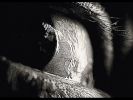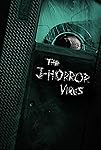Eye For Film >> Movies >> The J-Horror Virus (2023) Film Review
The J-Horror Virus
Reviewed by: Jennie Kermode

What is it about Japanese horror? Opening with a beautifully designed montage of pen and ink line drawings and black and white photography, concrete ruins and leafless trees and faces hidden by long black hair, its title scrawled in a scratchy font, Sarah Appleton’s latest documentary, co-directed with Jasper Sharp, explores the small group of films which became a global phenomenon during the 1990s. It screened as part of Frightfest 2023 and will be most appealing to audiences which already have some familiarity with the material, but it’s also a good introduction for beginners, and whoever you are, you’re likely to come way with a sizeable to-watch list at the end.
There have been Japanese horror films for as long as there has been Japanese cinema, but any fan of the genre will recognise the distinctive characteristics of this particular group of films. They frequently involve found footage, they feature the vengeful spirits of women or children, the former usually with long black hair obscuring their faces, and they have a contemporary setting, often with a particular focus on technologies like photography or video. They stand out in the West because of their investment in anticipation and fear, as opposed to actual violence. This stems from a difference in the fundamental concept of what constitutes horror – as explained here, once a ghost starts attacking you, it stops being scary. It’s just a monster in a thriller or action film.

Two threads define this documentary. The first is an exploration of the films themselves and how they emerged as a movement within cinema. The second is an examination of their historical roots. Both are informed by Sharp’s years of research as a film scholar, and by interviews with key figures, including an extensive one with Kiyoshi Kurosawa, whose Cure is identified as a foundational J-horror film despite not featuring any ghosts. Sharp highlights the fact that what followed were films made by film scholars as part of an artistic conversation. It’s rare that economics is addressed in documentaries of this sort, but there’s an intriguing look at the recession which Japan experienced around the same time, and the way that it created fear of sudden instability or loss of control. The rapid development of new technologies is also addressed as an influence, especially with regard to the contrast between the textures of digital and 35mm images.
It was Ring which first brought the genre worldwide attention, and the film reflects on how that franchise developed in relation to what others were creating. There’s a fascinating interview with Rie Ino’o, the original Sadako, who explains how she conceived the distinctive movements which make her character so creepy and so memorable. More obscure films also get their due, however, such as Teruyoshi Ishii’s groundbreaking found footage horror film/fake documentary Psychic Vision, which has rarely been seen outside the country but was a big influence on J-horror directors.
The deeper historical part of the film addresses matters which will be obvious to Japanese viewers but potentially revelatory to those elsewhere. Looking at traditional tales like Peony Lantern and Yotsuya Ghost Story – the latter featuring the ghost Oiwa with her face covered by long black hair – provides a great deal of context. The idea of threat coming from the oppressed classes, those who have been wronged in life, presents a stark contrast to Western cinema’s traditional location of threat in physically powerful men, though it might be seen as having something in common with the Gothic tradition. There are also interesting practical and cultural observations here, such as the setting of such stories – and J-horror films – in July or August, when heavy rains tend to hit Japan, creating a humidity which distorts perception. This is the time when the spirits of ancestors are said to be most inclined to visit the living.
This rich vein of cultural information gives The J-Horror Virus depth and ensures that viewers have a good deal to engage with. There are also, as one might expect, assorted clips from the films themselves which explore their shared themes and help viewers to track their development. Achieving a good balance of the scholarly and the entertaining, the documentary may also give you a shudder or two, especially when one interviewee points out that, thanks to this cinematic movement, Japan’s experiences of terror have now infected much of the rest of the world.
Reviewed on: 25 Aug 2023
















